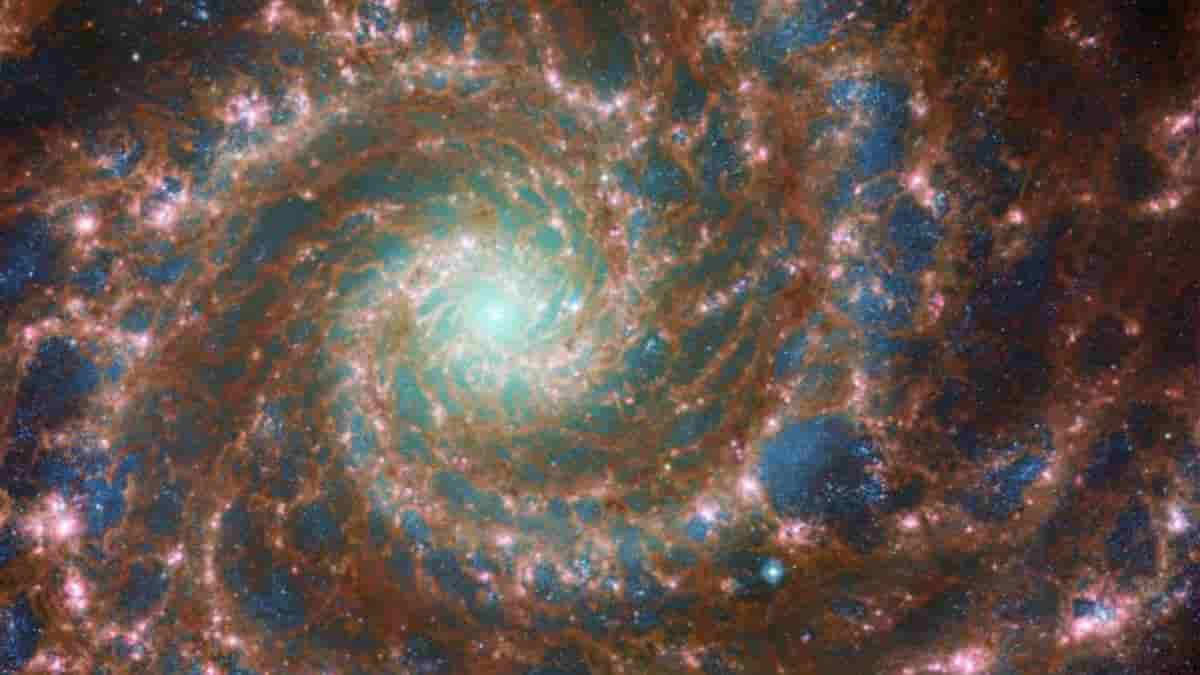The images of M74, also known as Phantom Galaxy, released by the European Space Agency

The Phantom Galaxy, M74
Approximately 32 million light-years from Earth, in the direction of our constellation Pisces the Fishes, is Messier 74, also referred to as the Phantom Galaxy.
The galaxy is called the Phantom due to its faint surface brightness. It is the most difficult to find of all the Messier objects that amateur astronomers observe via small telescopes. The low surface brightness is explained by the fact that the galaxy virtually faces Earth. Due to its orientation in space, the galaxy’s two distinct spiral arms can be seen, making it a prime example of a grand-designed spiral galaxy. Astronomers estimate that M74 has 100 billion stars.
The European Space Agency (ESA) released these images of M74, also referred to as the Phantom Galaxy, yesterday (August 29, 2022). On the left, you could see a picture taken by the Hubble Space Telescope. To the right, you might see a picture taken by the James Webb Space Telescope. The composite image in the center of the picture was made using optical data from Hubble and mid-infrared data from Webb.

In the above picture, The galaxy’s arms are marked by dust in various shades of red, with lighter orange tints denoting hotter dust regions. The center of the galaxy and the newborn stars are colored blue. The Phantom Galaxy’s core emits a ghostly glow as it is illuminated by heavier, older stars that are cyan and green as they approach the galaxy’s center. Along the arms, pink star formation bubbles can also be seen. It’s unusual to observe so many different cosmic features in one shot.


